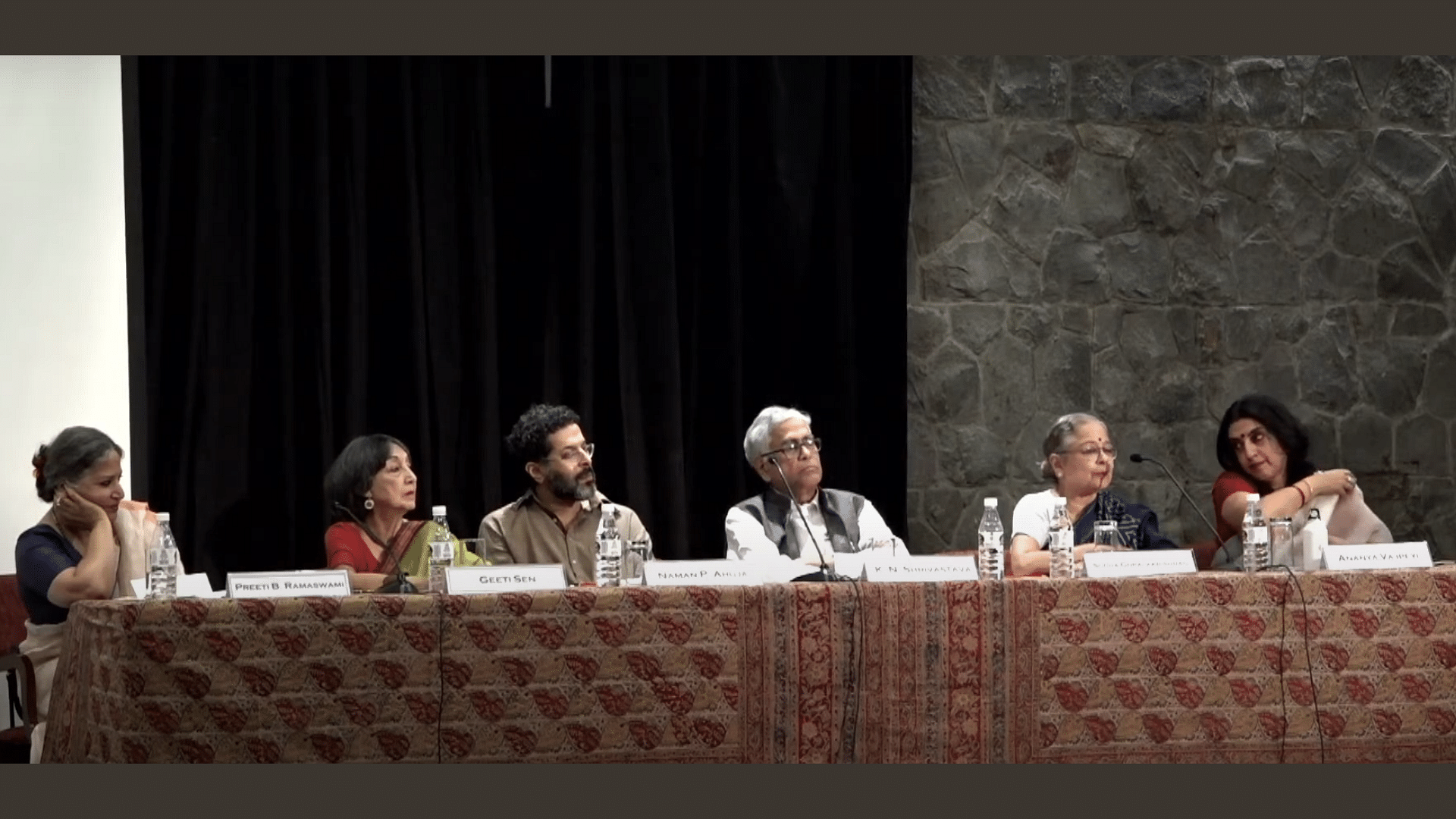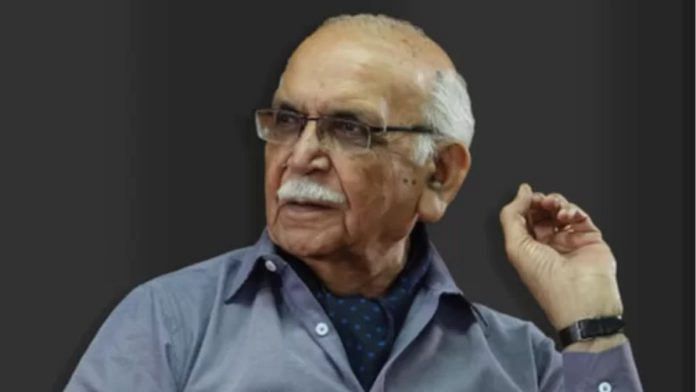New Delhi: Abandoning the Indian Administrative Service to spend one’s lifetime admiring art, does not seem like a practical decision. Yet, this was the choice that Padma Bhushan and renowned Indian art critic, BN Goswamy made after he spent two years as part of India’s steel frame.
The celebrated art historian who died in November last year, emerged on the scene during a period that “coincided with the coming of age of modern Independent India” said Ananya Vajpeyi, writer and professor at the Centre for the Study of Developing Societies. She moderated the tribute held in memory of the illustrious Goswamy at the India International Centre (IIC) on 15 May.
The auditorium was filled with hoary-haired contemporaries who had crossed paths with the acclaimed scholar during his life.
“The history of post-colonial Indian art, art history, and art criticism cannot be understood without the lifetime and the career of BN Goswamy and in that sense, he is a maker of modern India,” Vajpeyi said.
Over a productive career that spanned nearly 60 years, Goswamy who was championed as an unrivalled communicator by the panellists at the tribute, sought to inform the world of the magic couched within Indian art. He made it his life’s mission to “conjure a whole world through an image” said Vajpeyi.

When asked what Goswamy saw in art that other critics missed, art historian and professor at Jawaharlal Nehru University, Naman Ahuja answered with a smile— “He made artwork come alive.”
Also read: How unique ‘Bazaar paintings’ fuelled trade in colonial India
The portrait of an art critic
During the memorial, the panellists shared fond memories of their encounters with the much beloved Goswamy and took the members of the audience on an expedition through the breadth of his astounding oeuvre.
The first of the many stories highlighted the passion and vigour with which Goswamy discharged his duties despite setbacks. It was rendered by Sudha Gopalakrishnan, head researcher, IIC research division and founder-director of the National Manuscript Mission. Gopalakrishnan spoke of an exhibition that the sedulous Goswamy curated for the Museum of Applied Arts in Frankfurt in 2006. He took great pains to travel across the country to collect manuscripts from private and public repositories for the exhibit.
“It was a great success at the site, but there was an ironic twist to the whole story. Professor Goswamy could not come to Frankfurt to give the keynote speech,” she said.
He had caught an illness from one of his manuscript exploration trips, added Gopalakrishnan who stood in for him at the event.
Professor Ahuja who was a student of the art critic also regaled the audience with a chucklesome tale. He told the attendees he first met Professor Goswamy in his 20s. At that time, keen on becoming an art historian himself, he had requested Goswamy to write him a letter of recommendation to SOAS, London for his higher studies. Goswamy agreed to do so.
The JNU professor told the audience that he was quite “dismayed” when he first read the opening line of the letter, since he found the following words inscribed: “I have never taught Naman Ahuja, nor has he studied art history previously.” An eruption of laughter followed.
Professor Ahuja went on to say that it was that very letter that got him his admission.
“I got to understand why the manner in which he had written it was so important many years later. It was a letter written honestly. It was written elegantly. The care and time he had taken to craft the letter was visible to the selection committee,” he said.
Also read: Art meets Ayodhya. NGMA, Lalit Kala Akademi are remaking India’s culture scene
An unparalleled thinker
As a writer for The Tribune, through his countless lectures and his plethora of publications, the art critic contributed to placing Indian art on the global map.
For Geeti Sen, art historian and former Chief Editor of IIC’s Publications Division, an anthology by Goswami called The Spirit of Indian Painting: Close Encounters With 101 Great Works stood out. The book presents a curated list of 101 paintings from late medieval India till the time of the Mughals. Sen presented 11 of these alluring paintings and analysed them as Goswamy would.
Later, Preeti Ramaswami, history professor at Ashoka University, expounded on Goswamy’s signature method by which he analysed visual representations of literary themes and literary narratives in the unfinished Nala and Damayanti series of paintings. She spoke of the meaning that Goswamy exhumed from drawings made with sindhuri kalam (red ink) splattered onto unprimed paper.
“The fact that they were made on unprimed paper meant that they could not be turned into finished paintings, why then were they made?” she said.
Reiterating the words of Goswamy, she said that they were made “to serve as namunas or visual notes that stayed with the painter to be transmitted into another body of work later on, perhaps by another generation of painters.”
The art critic’s keen eye uncovered that drawings were part of a larger process by which text and themes mutated in the course of travelling and being transmitted, Ramaswami added.
Goswamy was a thinker who sought not only to democratise the consumption of art but also to showcase unlikely artists who are often forgotten. Ahuja noted that certain works of his, such as his essay Pahari Painting: The Family as the Basis of Style, which followed the genealogy of a Guler family via the art that they produced, bestowed non-royal artists with a biography of their own.
He truly believed that art is for everyone, a sentiment we find nestled in the introductory paragraphs of his seminal book, The Spirit of Indian Painting where he writes, “to attain delight one must then learn to read a painting.”
(Edited by Theres Sudeep)






